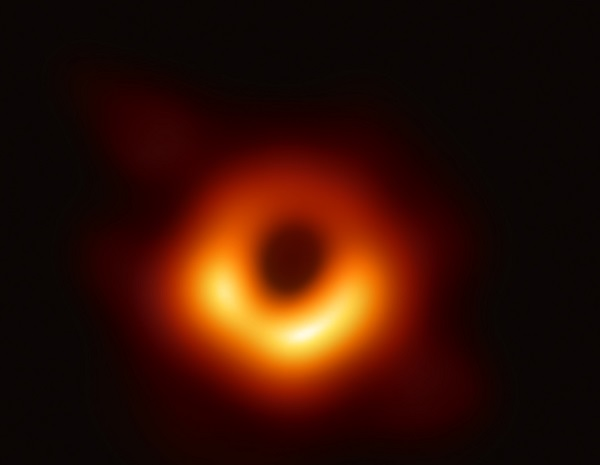

The technology that allowed astronomers to create this image is incredible.

Credit: University of Arizona / Dan Merrone Photo: The eight telescopes across the Earth that comprise the Event Horizon Telescope. I won’t lie to you: When I first looked at that image and realized what I was seeing, the hair on the back of my neck stood up. The black hole itself spins as well, in the same sense as the disk, so that also tells us that from our point of view, the black hole is spinning clockwise. That tells us which direction the accretion disk is spinning. See how the stuff at the bottom of the ring is brighter than the stuff at the top? That’s due to relativistic beaming! The material at the bottom is headed toward us, and brighter than the material at the top, which is headed away from us.

Now look again at the Event Horizon Telescope image. This bizarre effect means that an object headed toward you at close to the speed of light appears brighter, because more of its light is focused toward you, and something moving away appears darker, because its light is focused away from you. If you hold a light bulb in front of you, the light expands in a sphere, in all directions, But if that light bulb is moving near the speed of light, the light we see emitted from it appears to be beamed, like a flashlight, aimed into the direction it’s moving. There’s an effect called relativistic beaming, caused by the incredibly rapid motion of the material as it orbits just outside the black hole. In this diagram, the Earth is off to the right, and light from material behind the black hole gets bent toward us, leaving a “hole” where the black hole itself is. The path of light around a black hole gets severely distorted by gravity. The speed it whirls around depends on its distance from the event horizon stuff very close in moves very nearly at the speed of light, while stuff farther out is slower. Material, mostly gas and dust, is falling into it, and as it does it forms a flat disk called an accretion disk that starts just outside the event horizon and extends for many billions of kilometers. It’s also an active galaxy: Unlike the supermassive black hole in the Milky Way, the one in the center of M87 is actively gobbling down matter.

It’s a huge galaxy, bright enough to be seen using just binoculars, even though it’s 55 million light years away. M87 is an elliptical galaxy in the heart of the Virgo Cluster, a collection of hundreds of galaxies spread across the sky between the constellations of Leo and Virgo. The Milky Way has one that’s more than 4 million times the Sun’s mass, for example. We now think that every big galaxy in the Universe has a supermassive black hole in its center, with millions or even billions of times the mass of the Sun. Mind you, the Sun is 1.4 million km across now! So you have to make objects incredibly small and dense for them to become black holes. If you do the math - first calculated by Einstein in the early 1900s - you’ll find that if you compress the Sun down to a black hole it would be 6 kilometers in diameter. The size of the event horizon depends on the mass of the black hole. A photon, a particle of light, passing near that limit but still outside it will have its path bent considerably, but it can escape. But just outside it, gravity is intensely strong but not impossibly so. The surface of this sphere, if you think of it that way, is called the event horizon (because any event that happens inside it is beyond your horizon, and cannot be seen). What you’re left with is a spherical region in space where inside it nothing can get out.


 0 kommentar(er)
0 kommentar(er)
